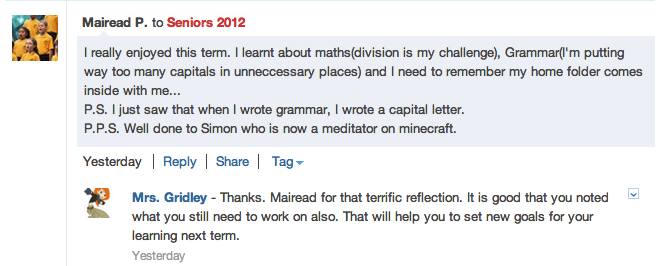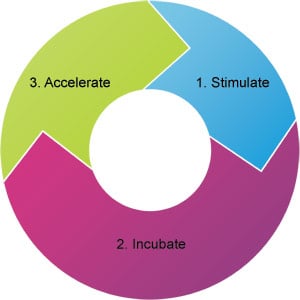 I like to allow students ‘sandpit’ time when encountering new tools or websites. I am finding that they need this time to explore the features, play, experiment, discover and wonder. We can then move on to more purposeful tasks and they will be familiar with the tool as well as ready to use it without some of the distractions that occur when first introduced.
I like to allow students ‘sandpit’ time when encountering new tools or websites. I am finding that they need this time to explore the features, play, experiment, discover and wonder. We can then move on to more purposeful tasks and they will be familiar with the tool as well as ready to use it without some of the distractions that occur when first introduced.
Most recently, I have applied this with the introduction of Edmodo to a group of Year 5/6 students. We gave them a few ideas, two group codes, but really did not teach them any skills.
Progressively, as they have explored and experimented, we have had to monitor or mediate a few incidents, but in general, they have done a great job. I believe that the management of any issues in this arena is wonderful as the ‘teachable moments’ that occur are very valid and immediate. We have started to create non-compulsory opportunities for them to use Edmodo to communicate about their learning .
They are ready to offer each other help
What I have loved is the fact that they are ready and confident to suggest uses for the tool.
The teachers are experimenting too, responding to notes, creating polls, creating Homework tasks, creating and awarding badges. Also, a lovely by-product occurred when a student was away from school and contacted her classmates on Edmodo and engaged with them from her sick bed.

Throughout the day many students and her teachers responded and wished her well.
This process reinforces many of my beliefs about the use of technology, namely
- play is an important element of learning
- most often the mechanics of a tool do not need to be explained to children (with obvious exceptions)
- students will support each other
- teachable moments occur when we give students ‘free’ rein
- the uses of tools can best be explored by being in the space – having a go
I guess Sandpit time is similar to the ‘Stimulate’ and ‘Incubate’ stages in The Educations Departments Innovation Model . Despite these describing much larger issues, I can see a correlation to smaller events like those described above.
“The Department’s model of innovation comprises three stages:
- Stimulate – system level reflection. Look at what’s happening and what’s been tried. Explore new ways and add new ideas.
- Incubate – local level action. Test ideas and develop the ones that work. Support change leadership and create communities of practice.
- Accelerate – system learning. Share what has been learned and scale-up the ideas that worked.”
Let’s see how the next stage goes ….






